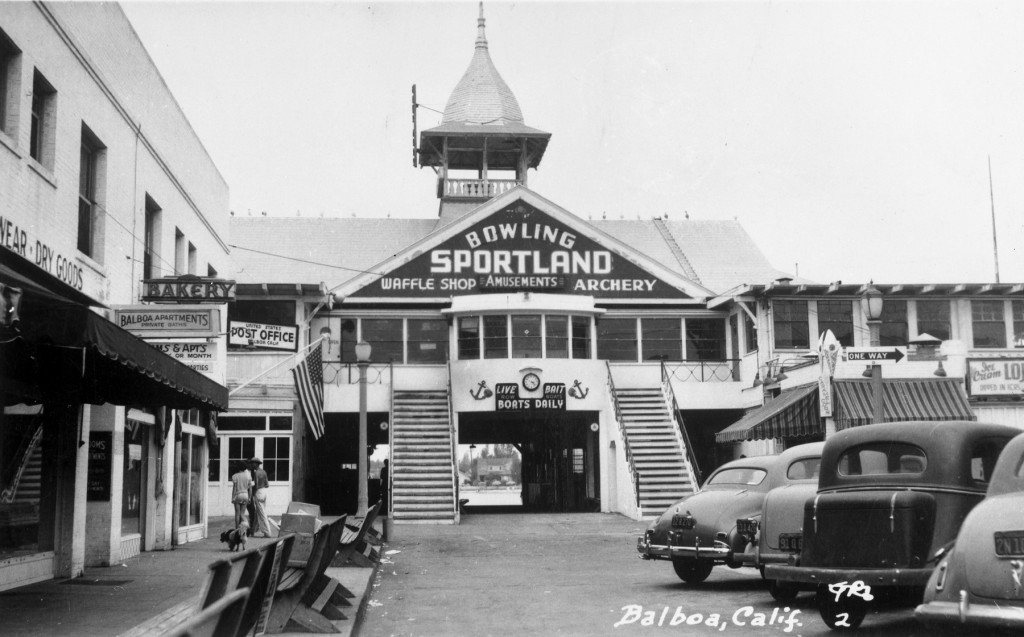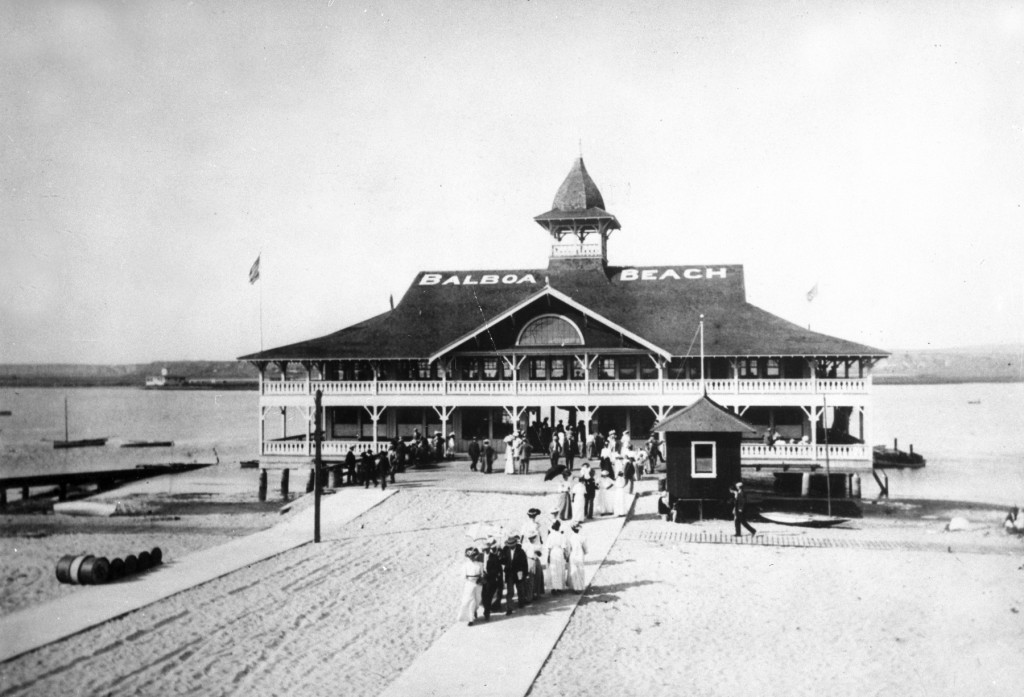One of Newport’s most famous “senior citizens” has a birthday this week–number 107 to be exact.
It’s a landmark birthday for an iconic Newport Beach landmark: The Balboa Pavilion, which opened on July 1, 1906.
 Built in 1905-1906, the Balboa Pavilion is Newport Beach’s oldest standing structure. Construction proved challenging, as the Pavilion could only be reached by boat or via a sandy road. However, when it was announced that the Pacific Electric Red Car Line would be extended to Balboa, the Pavilion workers rushed to complete their task.
Built in 1905-1906, the Balboa Pavilion is Newport Beach’s oldest standing structure. Construction proved challenging, as the Pavilion could only be reached by boat or via a sandy road. However, when it was announced that the Pacific Electric Red Car Line would be extended to Balboa, the Pavilion workers rushed to complete their task.
The Balboa Pavilion opened its doors just in time for the arrival of the first Red Line car on July 4. Nearly 1,000 beachgoers took the one-hour train ride from Los Angeles. When they arrived, they found the Balboa Pier (constructed simultaneously with the Pavilion) and the Balboa Hotel, built in just 10 days to accommodate the expected visitors.
The original building consisted of a large meeting room on the second floor and a bath house on the first floor, where people could change from street clothes into bathing suits.
As more visitors came to the Pavilion, a variety of activities were added and a small town grew around the structure. At various times, the Pavilion housed a post office, barber shop, bowling alley, art museum, gambling parlor, dance hall, and restaurant.
Speedboat rides, harbor excursions and sport fishing boats began operating out of the Pavilion, and regular bathing beauty contests were held, with contestants parading around Balboa and then returning to the Pavilion to be judged.
During the 1930s, the Balboa Pavilion became a popular dance hall that hosted many legends of the Big Band era, including Count Basie and Benny Goodman. The dance step called The Balboa is said to have originated at the Pavilion, although the nearby Rendezvous Ballroom made the same claim.
called The Balboa is said to have originated at the Pavilion, although the nearby Rendezvous Ballroom made the same claim.
In the 1940s, the upstairs area was converted into a 10-lane bowling alley, along with an archery range and an area with pool tables.
The Gronsky Family purchased the Pavilion in the late 1940s and renovated the building, reopening it in 1949. The upstairs switched to a bingo parlor, which was outlawed in 1952 and subsequently shut down. Art Gronsky opened a shell museum upstairs in 1954, which at one time displayed more than two million shells.
From 1962 to 1970, the Pavilion housed the Newport Harbor Art Museum, which became the Orange County Museum of Art when it moved to its current location in Newport Center.
In 1968, the Balboa Pavilion was named a California State Historic Landmark. The Pavilion is also listed in the National Register of Historic Places, the highest honor a historic building can receive.



